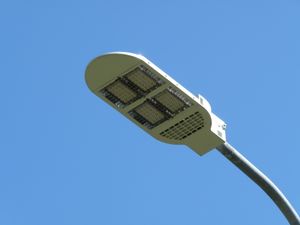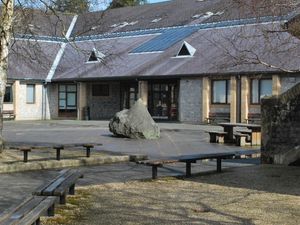Shropshire street lighting upgrade to take 36 YEARS
It will take 36 years for Shropshire Council to switch its street lighting to energy-efficient bulbs, the authority revealed today.

And it does not expect to see any savings from its street lighting budget when the work is complete, saying that any efficiency benefits will be offset by the cost of installing more lights and rising electricity prices.
Meanwhile, Telford & Wrekin Council says it will more than double its street-lighting budget this year as it upgrades more than 20,000 street lights across the borough by installing more efficient LED lighting.
Shropshire Council maintains just over 18,000 street lights across the county. Responding to a request under the Freedom of Information Act, the council’s director of place and enterprise George Candler said the authority had so far installed 3,169 LED lights.
“The authority is programming between 450 and 500 changes each year, subject to funding, which means it will take at least 36 years before all lighting is LED or its equivalent,” he added.
Mr Candler said the amount the council spent on installing, running and maintaining street lighting had steadily risen over the past four years.
During the 2015/16 financial year, the authority spent just under £1.64 million, rising to £1.67 million in 2016/17, £1.89 million in 2017/18, with £1.99 million earmarked for the new financial year.
Reduction
From 2014 to 2017, Telford & Wrekin Council spent an average of about £1.5 million each year on running, installing and maintaining street lighting. But this year the authority plans to spend nearly £3.6 million on roadside illumination.
Sasha Hickman, of Telford & Wrekin Council, said the investment would secure savings of £420,000 over the present financial year.
She said: “LED lighting uses significantly less energy than traditional street lighting lanterns, enabling at least a 50 per cent reduction in energy.”
“This reduction in energy use helps the council reach CO2 reduction targets.
“This is an excellent opportunity to improve the quality of street lighting for residents, and to deliver significant savings.”
If it sounds like there must be a catch, then it comes in the initial cost of installation. Telford & Wrekin Council is spending £5.2 million in the upgrade, meaning it will take well over a decade to recoup the initial investment.

Time moves fast in the world of lighting technology. In September 2009, Councillor Steve Bentley was celebrating the installation of the latest eco-friendly lighting at the Wharfage in Ironbridge. But what was state-of-the-art nine years ago has now been superceded, and these lights too are set to be replaced with an even more eco-friendly variety, although the outer casings will be retained.
Environmental charity 10:10 Climate Action says that if every council in the country switched to LEDs it would not only save local government more than £200 million a year, it would also reduce carbon emission by more than 600,000 tons – equivalent to removing 400,000 cars from the road.
Neil Jones, a campaigner for the charity, says: “In these tough financial times, £200m is a huge amount, that’s the same as providing 500,000 pupils with free school meals every year. Coupled with clear environmental benefits, it becomes a no-brainer.
“That’s why we’re calling on councils to take up the pledge to be greener, cheaper LED street lighting by 2022.”
Shropshire Council is also in the process of installing LED lighting, but is working to a somewhat longer time frame. The authority began replacing its lights just over three years ago, and at the moment has installed 3,169 LED lights. George Candler, the council’s director of place and enterprise, says: “The authority is programming between 450 and 500 changes each year, subject to funding, which means it will take at least 36 years before all lighting is LED or its equivalent.”
Softer
Wem is one of the latest areas of the county to benefit from the new lighting. Both Wem Town Council and Shropshire Council are responsible for the lighting in the town, depending on area, and most of the lights have now been converted. Deputy mayor Phil Glover, who keeps a delicatessen in the town, says as far as he is concerned the new lighting has been a big success.
“One or two residents have complained, saying the light isn’t as bright as it used to be, but I think that is just the way it is coned down,” he says.
“It’s not the bright orange light like on the old lights, which you can see for miles away, but most of it went where it wasn’t needed. It’s a softer light which is directed at the pavement.
“In the little cul-de-sac where I live, I feel very much more secure because I can see all the way down the cul-de-sac , whereas before I could only see bits of it, the rest was in shadow.”
Mr Glover said the town council had spent £60,000 on the scheme, and the benefits in terms of reduced bills were expected to be felt immediately. Shropshire Council, though, is less optimistic in its outlook. Mr Candler says the authority does not expect to see its lighting costs fall.
“Overall, the council will spend more on street lighting than previously incurred,” he says.
“Growth in the numbers of lights and increased costs of electricity are greater than the savings from energy efficient lights.”
Mr Candler says the council does not have records on the public’s reaction to the new lighting, but says anecdotal evidence suggests not everybody is happy.
“We have received complaints based on the impression that they aren’t as good as the ones they replace,” he says.





